Current Status Of Vietnam's Major Industries And Economic Growth
Current Status Of Vietnam's Major Industries And Economic Growth
What are the key factors behind Vietnam's remarkable economic growth today? To understand the full picture, it's essential to explore the current status of Vietnam's major industries and economic growth. From rapid GDP expansion and evolving economic policies to manufacturing, agriculture, and technology powerhouse sectors, Vietnam's landscape is shifting fast. Alongside these opportunities, challenges like labor shortages and infrastructure hurdles shape the path ahead. Let’s explore how these factors shape the future of Vietnam industry.
Overview of Vietnam's Economic Growth in Recent Years
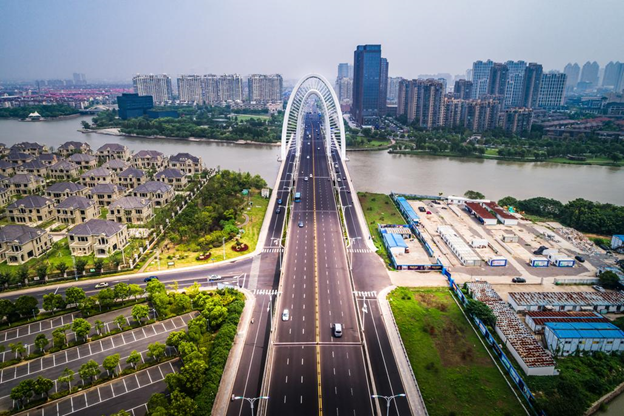
Overview of Vietnam’s economic growth (Source)
In recent years, Vietnam’s economy has gained impressive traction. Strong industrial expansion and steady foreign investment have pushed its status as a rising industrial hub in Asia. Here is a closer look at the current status of Vietnam's major industries and economic growth.
Vietnam's GDP Growth in Recent Years
Vietnam’s GDP grew by 6.93% in Q1 2025 compared to the same quarter last year, highlighting robust economic growth. The World Bank projects a GDP growth rate of 6.8% for the entire year, slightly below the government's ambitious target of 8%. This growth is driven by robust domestic consumption, increased public investment, and a surge in exports, particularly electronics and high-tech products.
Key Economic Indicators and Trends in 2025
Vietnam's economic indicators in 2025 showcase a positive trajectory. The country recorded a trade surplus of nearly US$1.5 billion, while new foreign direct investment (FDI) approvals surpassed US$6.9 billion, marking a 35.5% increase from the same period last year. Inflation remains under control, with the consumer price index (CPI) rising by 3.72% year-on-year.
The industrial production index also saw significant growth, rising by 16.7% in February compared to the previous year. These indicators reflect a stable macroeconomic environment conducive to sustained growth and reinforce confidence in the Vietnam industry.
How Vietnam's Economic Policies Shape Growth
To drive economic expansion, Vietnam’s leadership has put strategic measures in place. Key initiatives include a six-month reduction in value-added tax (VAT), amendments to the Law on Tax Administration, and discontinuing VAT exemptions for certain imported goods.
The National Digital Transformation Program also targets a 25% GDP contribution from the digital economy by 2025. These policies are designed to stimulate domestic consumption, attract foreign investment, and promote sustainable development across various sectors of the Vietnam industry.
Major Industries Contributing to Vietnam's Economy
A key driver of Vietnam’s economy is its diversified industrial structure. Several key sectors power the country's growth and shape its economic future. These industries generate revenue and provide job opportunities for millions of people. Here's a closer look at the major sectors that drive Vietnam industry:
Manufacturing and Production Industry
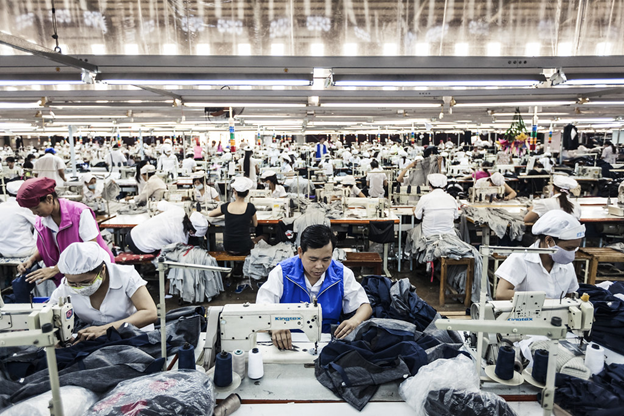
Manufacturing and Production Industry (Source)
Vietnam's manufacturing sector is a cornerstone of its economic growth. In 2022, it accounted for approximately 23.88% of the national GDP, amounting to over VND 2.4 quadrillion. This momentum continued into 2023, with the sector demonstrating a year-on-year growth of 4.14% in the second quarter.
The resilience of the manufacturing industry is evident, having maintained a positive GDP growth rate of 2.6% in 2020, even amid global economic challenges. By May 2023, the sector had attracted nearly $267 billion in foreign direct investment, underscoring its appeal to international investors.
The sector's growth is fueled by strong export performance, particularly in electronics, textiles, and footwear. However, challenges remain, such as enhanced value-added production and integration into global supply chains. Addressing these issues is crucial for sustaining long-term growth and competitiveness in the Vietnam industry.
Agriculture and Food Processing Industry
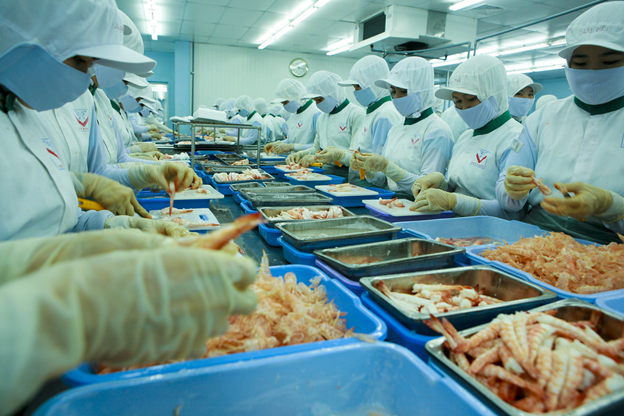
Agriculture and Food Processing Industry (Source)
Agriculture has long been central to Vietnam’s economy and remains a key contributor today. The agriculture, forestry, and fishery industries posted a 2.98% increase in 2024, supporting 6.09% of overall economic growth. This sector remains a significant source of employment, particularly in rural areas.
The food processing industry further amplifies the sector's impact, accounting for approximately 19.1% of total industrial production value in 2020. With an average annual growth rate of 7%, it serves as a critical link between agriculture and the Vietnam industry.
Vietnam's agricultural exports, including rice, coffee, and seafood, are highly competitive globally. The government's focus on modernizing agricultural practices and promoting sustainable farming methods aims to enhance productivity and ensure food security.
Construction and Real Estate Sector
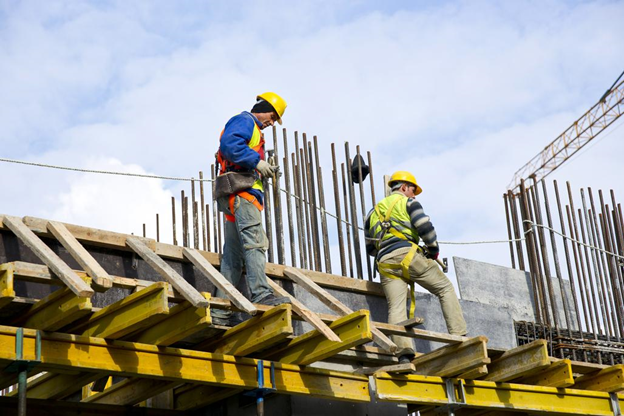
Construction and Real Estate Sector (Source)
The construction and real estate sector has experienced robust growth, contributing 45.17% to GDP growth in 2024, with an increase of 8.24%. Significant investments in infrastructure, housing, and industrial real estate drive this expansion.
In the first half of 2024, the sector's output was projected to reach VND 695.60 trillion, a 9.8% increase from the previous year. This growth reflects the government's commitment to addressing urbanization challenges and improving living standards.
While the residential market faces challenges such as unsold inventories, the industrial real estate segment remains strong, attracting domestic and foreign investors. The development of logistics infrastructure and industrial parks is expected to sustain growth in this sector.
Technology and Digital Transformation

Technology and Digital Transformation (Source)
Vietnam's digital economy is rapidly expanding, with revenue exceeding $150 billion in 2024 and a growth rate of 15%. With a strong emphasis on Industry 4.0, the government is updating traditional industries and fueling the rise of new fields such as digital services, e-commerce, and fintech.
With the digital economy comprising over 18% of GDP in 2024, Vietnam ranks 41st globally in terms of this economic category. Investments in data infrastructure, cybersecurity, and digital skills development support this growth.
Notable developments include establishing AI-focused facilities by companies like FPT and collaborations with global tech giants such as Google and Meta. These initiatives position Vietnam industry as a competitive player in the global digital economy.
Challenges Facing Vietnam's Industries and Economic Development
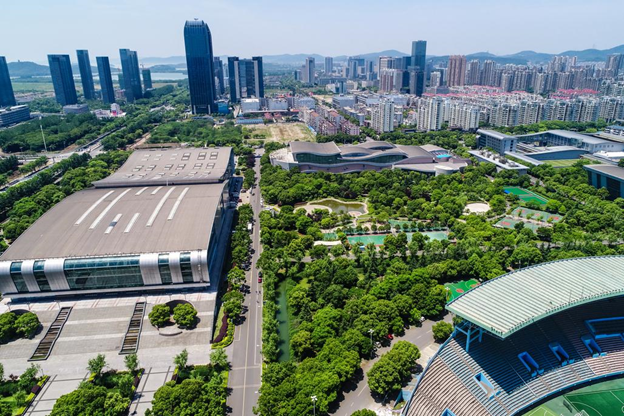
Challenges facing Vietnam's industries and economic development (Source)
Vietnam's rapid industrialization and economic growth have brought about significant challenges that must be addressed to ensure sustainable development. Key issues such as labor shortages, environmental sustainability, and infrastructure bottlenecks threaten the nation's long-term economic stability and the success of Vietnam industry.
Labor Shortages and Skills Gaps
Vietnam's manufacturing sector is experiencing a significant shortage of skilled workers. Approximately 45% of foreign direct investment (FDI) companies consider this a considerable challenge. The gap between the demand for advanced technical competencies and the available workforce threatens production capacity and innovation potential. This shortage is projected to leave 2.1 million positions unfilled by 2030, creating significant operational risks.
The labor force remains predominantly rural, with 61% of workers residing in suburban and rural areas. This distribution limits the availability of skilled labor in urban industrial zones. Additionally, the unemployment rate remains low at approximately 2%, indicating a tight labor market.
To address these challenges, there is a need for targeted investments in vocational training and education. Collaborations between the government, educational institutions, and private sector companies can help bridge the skills gap and prepare the workforce for the demands of modern industries.
Environmental and Sustainability Issues
Vietnam's rapid industrialization has led to significant environmental challenges. The country struggles with pressing environmental concerns, including pollution, waste management shortcomings, and deforestation. These environmental concerns not only affect public health but also impact the sustainability of industrial activities.
The government has identified the need to move toward a green economy. By early 2024, more than 30% of approximately 400 industrial park projects had received certification as green buildings. This shift towards eco-industrial parks demonstrates a commitment to sustainable development.
However, challenges remain in implementing effective environmental policies. There is a need for greater accountability and transparency in environmental governance. Addressing these issues requires a comprehensive approach that includes stricter regulations, public awareness campaigns, and incentives for businesses to adopt sustainable practices.
Infrastructure and Logistics Challenges
Significant issues in Vietnam’s logistics sector are preventing the effective movement of goods. Despite contributing 5.17% to GDP in 2024, the industry struggles with inadequate infrastructure, including congested ports and outdated transportation networks.
To boost logistics infrastructure, the government has started projects like the North-South Expressway and Long Thanh International Airport. These investments aim to enhance connectivity between industrial zones, seaports, and urban centers, thereby improving the efficiency of goods transportation.
However, challenges persist in implementing these projects due to land acquisition issues and bureaucratic hurdles. Addressing these obstacles requires streamlined regulatory processes and increased public-private partnerships to accelerate infrastructure development.
Kizuna: A Key Partner in Vietnam's Industrial Growth
As mentioned above, Vietnam's rapid industrial expansion reshapes its economic landscape. Amid this transformation, Kizuna stands out as a pivotal partner, offering tailored solutions to meet the diverse needs of businesses aiming to establish or expand operations in the country.
Why Collaborate with Kizuna for Industrial Development
Kizuna provides a strategic advantage for companies seeking to enter Vietnam's market. With over 175 foreign direct investment (FDI) enterprises from Japan, South Korea, the United States, Germany, and Singapore, Kizuna has established itself as a trusted partner in the industrial sector. The company's ready-serviced factory model allows businesses to bypass lengthy construction phases and commence operations swiftly and efficiently.
Kizuna's strategic location in Long An Province, adjacent to Ho Chi Minh City, offers proximity to key transportation hubs, facilitating seamless logistics and supply chain management. This accessibility is crucial for businesses aiming to optimize their regional operational efficiency.
How Kizuna Supports Businesses in Vietnam's Industrial Sector
Kizuna's commitment to supporting businesses extends beyond providing physical infrastructure. The company offers a comprehensive ecosystem of services, including legal assistance, human resources support, and administrative services, all delivered by a professional and multilingual team.
Furthermore, Kizuna's facilities are designed with sustainability in mind. The company has been recognized for developing green, smart, and sustainable industrial parks, aligning with global trends towards eco-friendly industrial development.